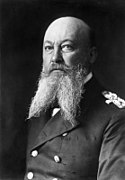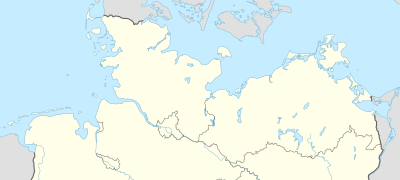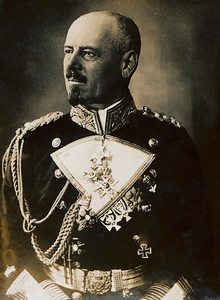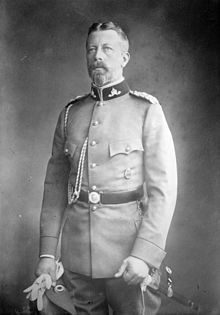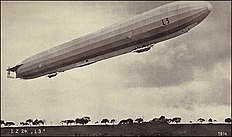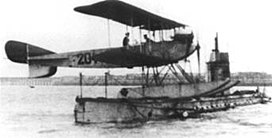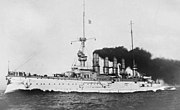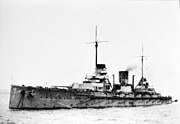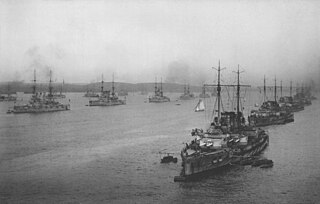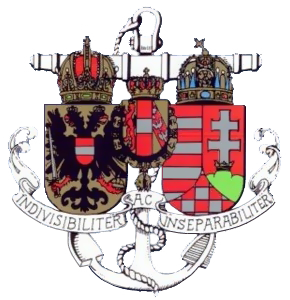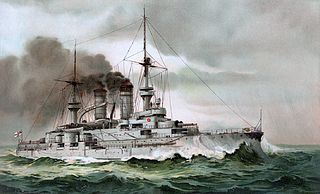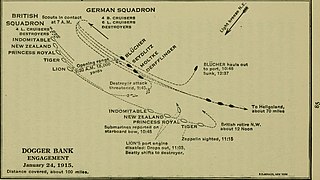Commanders and locations of the Imperial German Navy

The overall commander of the Imperial German Navy was Kaiser Wilhelm II. All authority over the navy was vested in the Kaiser, and he was ultimately responsible for all decisions regarding the navy. [1] Under the Kaiser were a number of organisational bodies responsible for various aspects of the navy's administration and operation, each of which was directly responsible to the Kaiser:
- The Naval Cabinet was a body of the Imperial Household, with responsibility over promotions and appointments, and the drafting and issuing of the Kaiser's orders.
- Chief of the Naval Cabinet - Admiral Georg von Müller
- The Imperial Naval Administration was the government department with responsibility for the Navy, which was answerable to the Imperial Chancellor, and was headed by the State Secretary.
- State Secretary - Grand Admiral Alfred von Tirpitz
- Deputy State Secretary - Vice-Admiral Eduard von Capelle
- State Secretary - Grand Admiral Alfred von Tirpitz
The departmental heads within the Imperial Naval Administration were: [1]
| Nautical Department | Vice-Admiral Max von Grapow |
| Armaments Department | Vice-Admiral Gerhart Gerdes |
| Shipyard Department | Vice-Admiral Karl Dick |
| Naval Construction Department | Vice-Admiral Friedrich Schrader |
| German Department | Rear-Admiral Friedrich Bodicker |
| States Department | Vice-Admiral Harald Dähnhardt |
- The Admiralty Staff was formed in 1899 to replace the Naval High Command, and operated as an organisation intended to gather intelligence and prepare operational plans for presentation to and approval of the Kaiser. [2]
- Chief of the Imperial Admiralty Staff - Vice-Admiral Hugo von Pohl
- Deputy Chief of Staff - Rear-Admiral Paul Behncke
- Head of the Central Bureau - Rear-Admiral Albert Hopman
- Chief of the Imperial Admiralty Staff - Vice-Admiral Hugo von Pohl
- The Inspector-General of the Navy was a post held intermittently, intended to undertake inspection of the navy itself to ensure it was operating at maximum efficiency. The Inspector-General's office was divided into a number of individual inspectorates related to different areas of the Navy's operations. [note 1]
- Inspector-General of the Navy - Grand Admiral Prince Heinrich of Prussia [note 2]
- 2nd Inspector-General - Rear Admiral Karl Zimmerman
- Inspector-General of the Navy - Grand Admiral Prince Heinrich of Prussia [note 2]
Training schools
The navy had a number of establishments to train its personnel, both generally and in specific technical areas. In addition, a number of ships were on the strength of training establishments to provide practical experience.
- Mürwik Naval School - primary training establishment for officers
- Boiler and Engine Room Training Schools
- SMS Kronprinz (Boiler room training ship)
- SMS Fürst Bismarck (Engine room training ship)
- Gunnery training school
- Torpedo training school
German naval bases


Germany had two major naval bases covering its main areas of interest: [1]
- Kiel - headquarters of the Baltic Naval Station, which was also responsible for the base at Danzig in East Prussia.
- Commander, Baltic Naval Station - Vice-Admiral Gustav Bachmann [3]
- Chief of Staff - Rear-Admiral Georg Hebbinghaus
- Commander, Kiel Naval Base - Vice Admiral Konrad Henkel-Gebhardi
- Commander, Kiel Fortress - Vice Admiral Reinhard Koch
- Commander, Danzig Naval Base - Rear Admiral Franz von Holleben
- In addition to hosting the fleet units stationed in the Baltic Sea, a number of other units were under the direct command of the Baltic Naval Station commander:
- 1st Seaman Division (Kiel)
- 1st Marine Artillery Division (Friedrichsort)
- 1st Torpedo Division (Kiel)
- 1st Battalion of Marines
- As well as the warships of the fleet, a further unit of the Imperial Navy stationed at Kiel was the Imperial Yacht, which was the personal vessel of the Kaiser, used both for his annual cruise to Norway as well as transporting him on overseas visits, but was also available for use as an aviso, or despatch boat.
- Commander, Baltic Naval Station - Vice-Admiral Gustav Bachmann [3]
- Wilhelmshaven - headquarters of the North Sea Naval Station, which also served as the host base of the High Seas Fleet.
- Commander, North Sea Naval Station - Vice-Admiral Günther von Krosigk [3]
- Commander, Wilhelmshaven Naval Base - Rear-Admiral Hugo Kraft
- Commander, Wilhelmshaven Fortress - Rear-Admiral Friedrich Schultz
- Commander, Wesermunde Fortress - Vice-Admiral Johannes Schröder
- Commander, Helgoland Fortress - Vice-Admiral Leo Jacobson
- As well as hosting the High Seas Fleet, other units were also under the direct command of the North Sea Station commander:
- 2nd Seaman Division
- 2nd Marine Artillery Division
- 3rd Marine Artillery Division
- 4th Marine Artillery Division
- 2nd Torpedo Division
- 2nd Battalion of Marines
- Commander, North Sea Naval Station - Vice-Admiral Günther von Krosigk [3]
In addition to its two major bases in Germany, the Imperial German Navy had a number of units stationed overseas.
Barrack ships
As well as barracks ashore, the navy maintained a number of old and withdrawn ships for use as accommodation for its personnel while in harbour.

